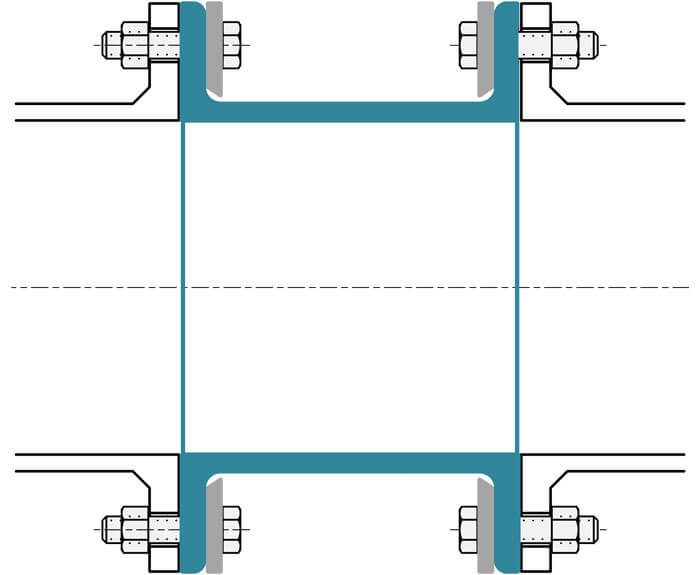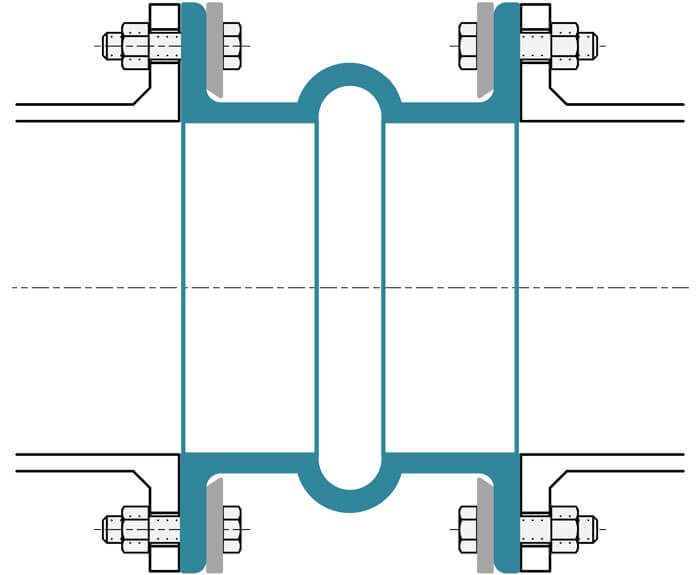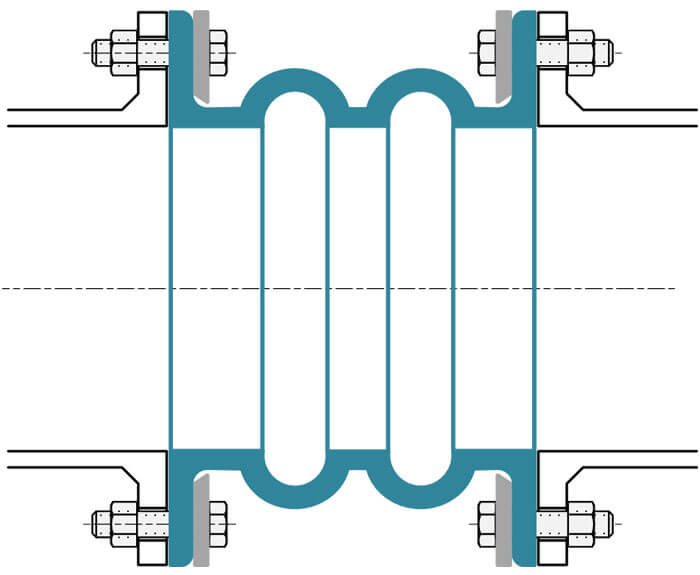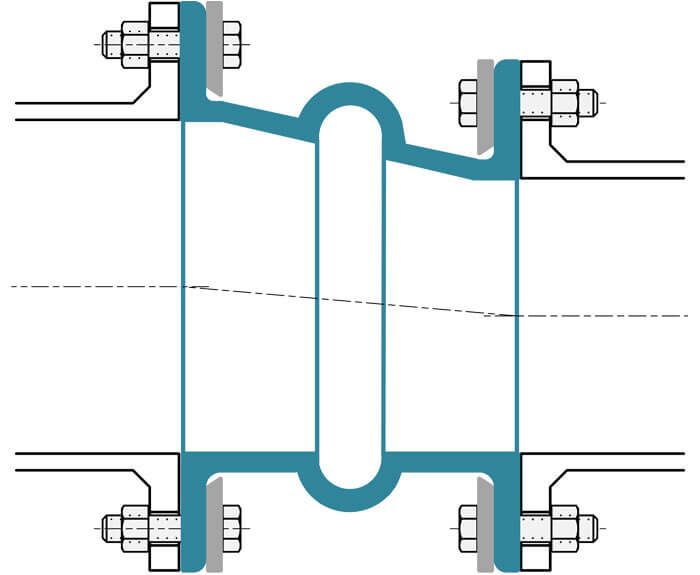Materials
Operating Temperature Limits
Elastomers have very predictable and consistent operating temperature limits. This is the first selection criteria for the materials used in the construction of rubber expansion joints. All elastomers can tolerate slightly higher temperatures for short periods of time. While it is common to have different elastomers for the tube (innermost elastomeric material) and the cover (outermost elastomeric material), all materials must be within the operating temperature limits.
Abrasion Resistance
Many factors (such as velocity, particle size, etc.) influence the abrasion of elastomers. The material’s abrasion resistance is taken into consideration when choosing the innermost elastomeric material (tube). We can also increase the thickness of the tube to increase the abrasion resistance, as well as add stainless steel (or even ceramic-lined) liners that bolt in place with the expansion joint.
Chemical Resistance
Material chemical resistance data is considered when choosing both the inner and outer elastomeric materials. In most cases, the service fluid contains many different substances. We focus on the most severe substance in terms of the effect on the elastomer, and select the elastomer accordingly.
Commonly used materials:
- Natural Rubber
- Gum Rubber
- Neoprene
- Nitrile
- Chlorobutyl
- EPDM / NORDEL®
- VITON®
- PTFE / TEFLON®
Common Applications
Absorber Bleed Pump, Absorber Recycle Pump, Auxiliary (AUX) Pump Inlet & Outlet, Blower Pump, Boiler Feed Water, Circulating Water (CW) Pump Inlet & Outlet, Condensate Pump, Condenser Inlets & Outlets, Cooling Tower, Cooling Water Pump, Feed Pump, Hot Well Pump, Limestone Slurry, Make Up Water, Recycle Pump, River Water Pump, Service Cooling Water.
Note: NORDEL®, VITON®, and TEFLON® are registered trademarks of DuPont. Whenever possible, we use DuPont elastomers.




